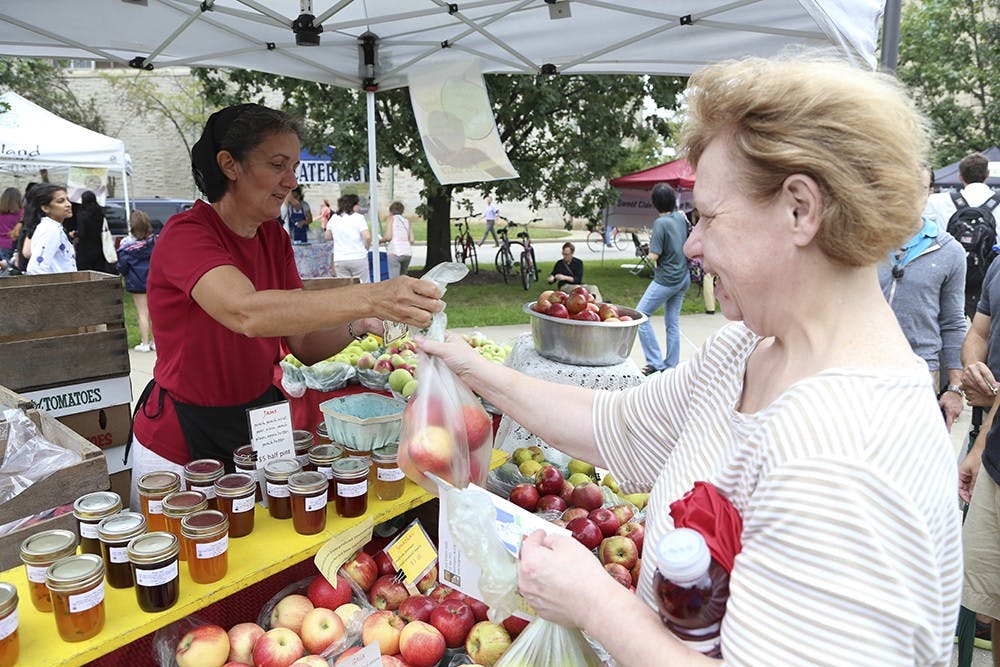Students gathered at the IU Art Museum for the fourth annual Big Red Eats Green Festival where they treated themselves to food from local growers, restaurants and music from local bands and musicians.
The mission of the annual festival is tri-fold, according to the IU Office of Sustainability’s website.
The festival underscores the benefits and availability of eating local food and supports the native local food community, welcoming growers and restaurants committed to local food and sustainable practices.
“We’re trying to get students interested and exposed to all the food options we have in Bloomington, all the restaurants that are really committed to local, sustainable practices,” said Ellie Symes , one of two student event coordinators.
Three growers, Heartland Family Farm, Old Lane Orchard and the Chile Woman and 13 restaurants, including Laughing Planet Cafe, Sweet Claire’s Bakery and the Village Deli, sold everything from banana bread and carrot cake to chipotle chicken and bean burritos.
The Chile Woman’s Susan Welsand said she has sold her chiles and other peppers at Big Red Eats Green since the first festival in 2011.
“It’s important because we want to introduce students to our local food culture and want students to meet some of our local farmers and our local restaurants who buy supplies from the local farmers,” Welsand said.
Six bands and musicians, ? including Peter Oren, Stone Irr and Fizzbang, and a local hoop dance troop, the Hudsucker Posse, supplied the entertainment.
Like Welsand, solo artist Stone Irr has attended Big Red Eats Green since its inaugural event.
“It really showcases the interesting food environment that we find ourselves in in Bloomington,” Irr said. “I think it’s really great to be engaged with that.”
Supporters of locally grown food argue that it comes with environmental and health benefits that nationally and internationally grown food lose during transportation, according to the Worldwatch Institute website.
Transportation costs are also naturally lower than food grown elsewhere.
In the U.S., food travels an average of 1,491.4 miles, according to the website.
“So when you buy produce from a market or you buy produce from people at our event, you’re getting it fresh,” Symes said. “You know the people you’re ?supporting.
You can see (them) and you feel good about it,” Symes said.
Symes said she encourages students to check out native meccas of local food, from Bloomingfoods Market and Deli to the Bloomington Community Farmers’ Market.
“We really want students to get a really good sense of Bloomington,” Symes said. “Bloomington, compared to other American cities, is a heaven of food culture. Bloomington is so ?progressive.”






